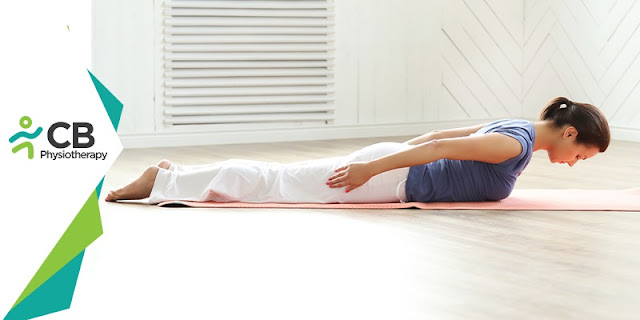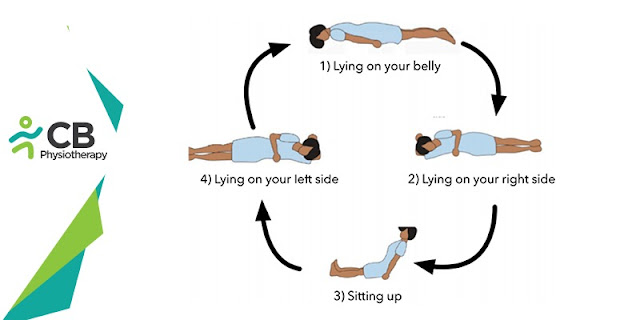 |
Pilates |
Pilates: Core Strengthening Exercises for Back Pain
Are you experiencing back pain? And are afraid to do strenuous exercises as a part of the treatment? If yes, then start doing Pilates to strengthen your deep abdominal muscles and pelvic floor. Pilates is a series of exercises that train your body to move in harmony and efficiency causing a balanced muscular development. An imbalanced body can lead to muscular weaknesses, which can further prevent a joint from moving through its full range of motion. The main aim of the exercises is to train the deeper, supporting muscles of your body to improve muscle and postural strength, balance, flexibility, and coordination. Pilates can be done under the guidance of trained professionals or physiotherapist who uses an eccentric type of muscle contraction to create long and strong muscles by emphasizing on core strength and skeletal alignment. In this blog, we will discuss in detail Pilates, its principles, and what its benefits are?
Types of Pilates
The two basic forms of Pilates are:
Mat-based Pilates: Pilate's mats are thicker and larger and tend to have a slicker surface, the series of exercises are performed in or against the gravity-assisted position with or without resistance. The main aim is to strengthen the deep muscles of your body to improve posture, balance, and coordination
Equipment-based Pilates: This includes specific equipment that works against resistance, e.g. a reformer (moveable carriage that you push and pull along its track), Pilates chair, ladder barrel, pulleys with resistance, dumbbells, resistance bands, exercise balls, foam roller, tennis ball, Pilates ring, and other types of small equipment that offers resistance to the muscle.
Principles
Core (internal muscles which lie deep in the abdomen and back) strengthening exercises combined with the Pilates principles are what make it different from other exercises. These include:
Relaxation: Relaxation is improved by proper patterns and mental concentration.
Breathing: Breathing is important in the Pilates method. Proper full inhalation and exhalation so that the air is squeezed out of the lungs. An increase in the intake of oxygen and the circulation of this oxygenated blood to every part of the body causes body cleansing. Pilates combines breathing practice with movements or exercises.
Concentration: Pilates emphasizes intense focus while doing the exercises. Maximum results can be yielded only when exercises are done with full attention.
Control: All exercises are done in a deliberate and controlled manner, to lift the muscles against gravity and resistance of the springs.
Centering: The center is the focal point of the Pilates exercise, referring to the group of muscles in the center of the body i.e. the abdomen, lower and upper back, hips, buttocks, and inner thigh is known as the powerhouse. The movements should begin from the center and move towards the limbs.
Flow: Pilate's exercises are meant to be graceful, smooth and should be done with ease so that each movement flows on its own.
Postural alignment: While performing the exercises correct posture and body alignment should be maintained by optimizing balance and coordination.
Precision: Focus on the core muscle engagement, proper alignment, and most important focus should be on placing the body parts appropriately.
Stamina: With relaxation, postural alignment, and controlled movement, motion becomes more efficient so there is less stress to perform the exercises.
How It Works
Place a mat and start doing a series of movements that will strengthen and stabilize your core. Pilates can be aerobic and non-aerobic form of exercise. The exercises are usually done in a specific order, one after the other, and do not include a lot of repetitions for each move. Though the moves look simple, they take a lot of control and precision, strong emphasis on the technique. Pilate's session approximately takes 45 minutes to an hour, even lesser time if fewer moves are done. To gain the maximum benefit, Pilates should be done at least two or three times per week and postural improvement may be noticed after 10 to 20 sessions. Pilates is a low-intensity exercise with no exertion and therefore free of sweating or straining, aimed towards the core, though you can also expect to see strength gains in your arms and legs. After exercises are performed regularly re-evaluation is done to ensure that the exercises are appropriate for the person.
Health benefits of Pilates: The health benefits of Pilates include:
· Improves strength
· Improves flexibility
· Increases strength of abdominal, lower back, and hip muscles.
· Improves balance
· Efficient movements
· Enhances muscular control
· Improves spine stabilization
· Better posture
· Prevents injuries due to muscle imbalances
· Improves coordination and balance
· Relaxation of your neck, shoulders, and upper back
· Improves lung capacity and
· Improves circulation through the body parts
· Improves concentration
· Increases body awareness
· Decreases weight
· Decreases stress.
Precautions: There are certain conditions during which Pilates should be done under the guidance of a physiotherapist
· Aged 40 years or above
· Recent surgery
· High blood pressure
· High cholesterol
· Pregnancy
· Diabetes
· Multiple sclerosis
· Medical condition such as heart disease
· Musculoskeletal injuries or disorders
· Obesity or overweight.
Pilates is not only used during rehabilitation but also in fitness programs. It can improve your health and fitness, so make it work for you.

